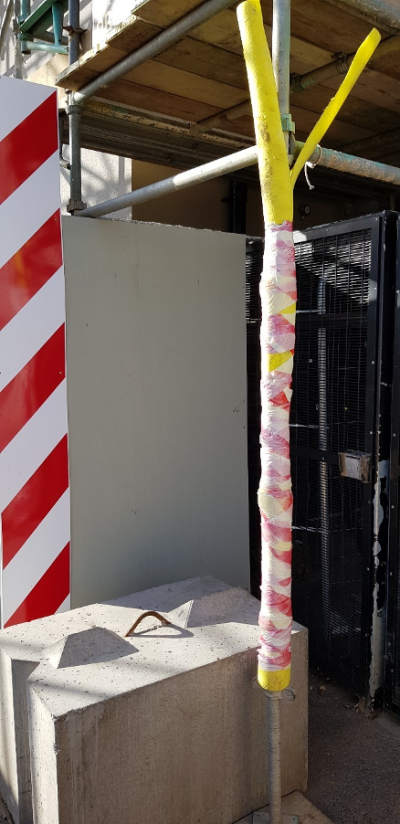The draft Building Safety Bill and Higher-risk buildings: Key Duties
This second of three posts on the Bill explains the duties that are imposed on the Accountable Person (AP), and residents in higher-risk buildings (discussed here); recovery of the costs that flow from this will be discussed in the next post.
Posted:
Time to read:
AP duties
The AP is placed under a number of key duties: to register the building with the Building Safety Regulator (cl 62), to appoint a Building Safety Manager (BSM) with appropriate skills, knowledge, and experience (cl 67), to assess building safety risks (cl 72), to take steps to prevent a major incident (cl 73), to prepare a ‘safety case report’ that both assesses the building safety risk (cl 74) and frames how the BSM is to manage the building (cl 76), to produce a residents’ engagement strategy that promotes ‘the participation of relevant persons in the making of building safety decisions’ (cl 82), to provide prescribed information (to the regulator, residents, and flat owners – cl 80), and to establish a system for investigating complaints (cl 84).

A building safety risk (cl 16), is a risk to the safety of persons arising from fire or structural failure (and other matters that may be prescribed). A major incident is one occurring as a result of a building safety risk which results in a significant number of deaths or serious injury to a significant number of people (cl 17(6); note, 'people' here is not limited to residents). The duty placed on the AP is to take ‘all reasonable steps’ to prevent a major incident happening and to reduce the severity of any such incident. As NearlyLegal has observed, the definition of ‘major incident’ is critical and yet linked to the non-defined term ‘significant’. Why only trigger the duty if a ‘significant’ number of people are affected? The risk based Housing, Health and Safety Rating System (discussed here) looks at both likelihood of occurrence and degree of harm: is one death not always sufficient harm?
The IA explains (para 263) that the safety case report will ‘broadly include a full building description, a hazard and risk assessment, a summary of mitigation measures, and the approach to risk management. Compiling this might require contracting a team of technical experts such as structural engineers, fire engineers and safety experts.’
An illustration is given (para 560 EN) of how clauses 72-74 work: the AP needs to identify hazards (perhaps changes to front doors reducing fire resistance, combustible materials in the common corridors, etc) and decide what measures are needed to lower the risks to an acceptable level, and to mitigate risk of harm to residents in the event of a major incident. The relationship between the AP duties and the responsibilities of the BSM is important: it is the AP who is placed under the clause 62-75 duties, and the BSM who has to ‘manage the building’ in accordance with the safety case report and provide prescribed information to the regulator; the AP has to establish a complaints system, the BSM operates it.
Collectively, the things that the AP is required to do appear to be referred to as the ‘building safety measures’ (cl 88, inserting s 17G(4) into the Landlord and Tenant Act 1985).
Duties to engage with residents

Too often there is a hostile relationship between the freeholder and leaseholders, with little information dripping down to those whose lives are most affected. Residents have even been refused copies of the Fire Risk Assessments for their homes (against the specific advice of UK Information Commissioner, Elizabeth Denham). Within days of Grenfell, stories emerged of the ‘unheard and unseen’ voices of Grenfell residents: the Grenfell Action Group had expressed concerns before-hand but they were, in the words of videographer and writer Daniel Renwick, organising on mute.
The draft Building Safety Bill attempts to address these concerns. First, the Building Safety Regulator must work with a residents’ panel to provide advice on strategy, policy systems and guidance of particular relevance to residents of higher-risk buildings (Cl 11). This panel must include occupiers and may also include non-resident leaseholders and groups representative of residents and/or non-occupying leaseholders. Secondly, the AP must prepare a residents’ engagement strategy for promoting ‘the participation of relevant persons in the making of building safety decisions’ (cl 82). This strategy must explain what information will be provided and how consultation will occur. A copy of the strategy must be given to each resident (back to the problematic question of who is a resident). Thirdly, residents and flat owners can request ‘prescribed information’ (cl 83; note that an ‘owner’ is defined in cl 105). The list of what this is likely to cover, given in para 638 EN, is long (for example, ‘full, current and historical fire risk assessments’, ‘information on the maintenance of fire safety systems’ etc). This duty to supply the long list of information listed may appear onerous but being available digitally should make this easier.
Delivering these goals will not be easy. Residency is not static: how can the AP know who the ‘residents’ are? Should the same term, ‘resident’, be used to cover the scope of all of the duties owed by the AP (and also owed by residents, see next heading) or does there need to be more nuance within the Bill? Will these proposals be effective: what will participation look like, will it be a tick box exercise much like the s20 consultations?
Duties on residents (cl 86)
Residents are also subject to duties: to keep in ‘repair and proper working order’ all relevant resident’s items (any electrical or gas safety installation or appliance in the dwelling), to take reasonable care to avoid damaging safety items in the common parts, and to comply with requests from the AP for information in connection with the AP’s duties relating to building safety risks and to prevent a major incident. If it appears to the AP that a resident breaches one of these duties, the AP can serve a notice on the resident requiring it to be remedied, and this can in turn be enforced by an order from the county court.
There appears, however, to be a mismatch between the wording of the Bill and the explanation of what these duties will cover (and remember, it is the wording of the legislation only that matters). Echoing wording found in the Hackitt review, both the EN and IA state that leaseholders are to cooperate with the AP (para 661, and 20 respectively) but the legislation refers more narrowly to these specific duties, not a general duty of cooperation. Further, the IA states that ‘residents have legal responsibilities to avoid actions that could pose a risk to the fire and structural safety of the building, for instance removing or replacing compliant fire doors or windows’ (para 84). This is not what cl 86 states: unless the fire doors or windows are ‘common parts’ and regarded as ‘safety items’ there is no such duty. It is often unclear in leases whether flat entry doors are demised to tenants or not, likewise windows. Internal doors would clearly not be ‘common parts’. Further, although it is clear from the Grenfell Tower Inquiry that windows (and the surrounds) can be important for fire safety, it may be better to be explicit than run the risk of arguments as to what counts as a ‘safety item’ .
Access to dwellings cl 87

As previous blog posts point out (here and here) access has been a big problem, particularly for social landlords seeking to enter flats in order to inspect for potential building safety risks, and also in order to carry out works to improve fire safety. Under most existing leases rights of entry are limited and often unclear.
Cl 88 inserts new s 17A – X (!) into the Landlord and Tenant Act 1985 that will imply various terms into a long lease (more than 21 years) of a dwelling in a higher-risk building. These include an implied covenant by the tenant to allow entry for the purposes of ‘carrying out prescribed building safety measures’. Cl 87 enables the AP to apply to the county court for access to dwellings (at a reasonable time on a specified date or within a specified period) where the resident has been asked to give entry but refused. The reason for access is tied to the need either to perform a cl 72 or 73 duty (assessing risks, preventing a major incident) or where the AP considers the resident’s duties have been breached (to keep electrical/gas items in repair). A crucial question which is not at all clear from my reading of the Bill or the EN is whether this right is limited only to access or whether it is more extensive and carries with it a right to do work to the flat itself (cl 73 says that steps may involve works to any part of the building). This could include, perhaps, replacing fire doors, installing new fire detection sprinklers, and retrofitting sprinklers.
Access is often strongly resisted by residents; it is their home, their privacy, that is being intruded on. Yet there is clearly a need for a balanced approach, recognising the complexity of shared buildings which entail interconnectedness and interdependency, and that the safety of the whole depends on safety of the individual parts. If entry rights do include a power to do works, there should be checks and balances to ensure the work is necessary and that is of high quality, including meeting aesthetic concerns. For example, as photos in this post show, some of the work done by Oxford City Council as part of major refurbishment includes deeply unattractive sprinklers. But there is nothing in the Bill about any of this so, perhaps, the right is the more limited one of simple access.
Moving on…
These duties, particularly those placed on the AP will result in significant costs. These are discussed in the next post.
__________
How to cite this blog post (Harvard style)
Bright, S. (2020). The draft Building Safety Bill and Higher-risk buildings: Key Duties. Available at: https://www.law.ox.ac.uk/housing-after-grenfell/blog/2020/08/draft-building-safety-bill-and-higher-risk-buildings-key-duties (Accessed [date])
Share:
